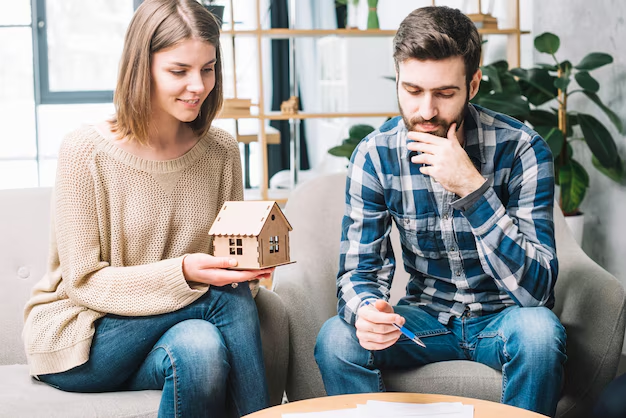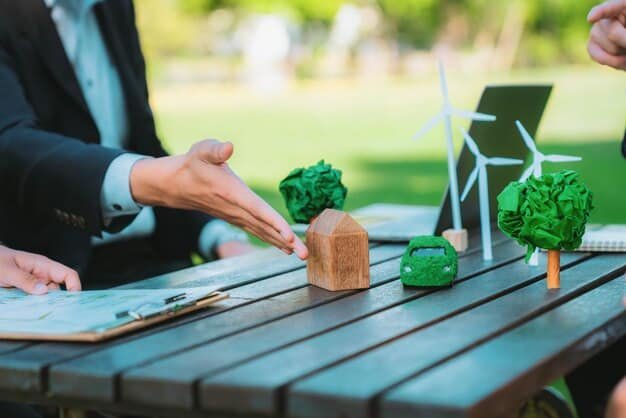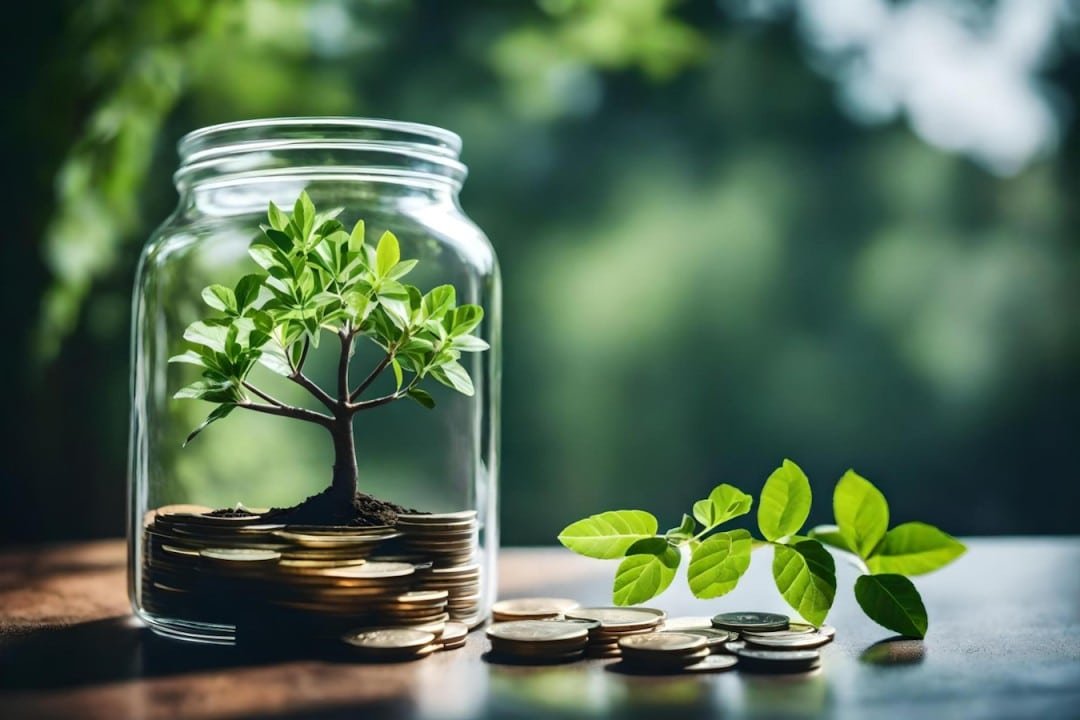In today’s world, energy efficiency has become a key factor in reducing environmental impact and improving overall sustainability. As energy costs rise and concerns over climate change grow, many homeowners are seeking ways to make their homes more energy-efficient. One of the most effective ways to fund these energy-efficient home renovations is through green loans. Green loans are specially designed financial products that help homeowners finance environmentally friendly projects, such as upgrading insulation, installing energy-efficient appliances, or even transforming homes with renewable energy systems like solar panels. In this article, we will explore what green loans are, how they can help fund energy efficiency renovations, and how you can leverage them to create an eco-friendly home that is both sustainable and cost-effective.
Key Takeaways
- Green loans are designed to fund environmentally sustainable projects such as energy-efficient home renovations and renewable energy installations.
- These loans offer benefits like lower interest rates, longer repayment terms, and potential tax incentives.
- Common eligible projects include solar panel installations, energy-efficient windows, insulation upgrades, and smart thermostats.
- Green loans help homeowners save money on energy bills, increase home value, and contribute to environmental preservation.
- To qualify for a green loan, you will need to meet specific eligibility requirements and provide documentation for your energy-efficient project.
What Are Green Loans?
A green loan is a type of financing specifically designed to fund projects that have a positive environmental impact. Unlike conventional loans, which can be used for any purpose, green loans are reserved for projects that aim to reduce carbon emissions, conserve energy, or promote other environmentally friendly practices. These loans can be used for a wide variety of projects, including energy-efficient home renovations, renewable energy installations, and sustainable construction.
The main advantage of green loans is that they typically come with favorable terms, such as lower interest rates, longer repayment periods, and in some cases, tax incentives or rebates. This makes it easier for homeowners to invest in energy-efficient upgrades without having to bear the entire upfront cost.
How Green Loans Work for Energy-Efficient Home Renovations

When it comes to home energy efficiency renovations, green loans can be used to finance a variety of improvements that help reduce energy consumption, lower utility bills, and make homes more environmentally friendly. Some common home renovations that are eligible for green loan financing include:
Insulation Upgrades:
Proper insulation is one of the most effective ways to reduce energy consumption in your home. Green loans can help fund the installation of new insulation in walls, attics, and basements to prevent heat loss in the winter and reduce the need for air conditioning in the summer.
Energy-Efficient Windows and Doors:
Replacing old, drafty windows and doors with energy-efficient alternatives can significantly reduce heating and cooling costs. Green loans can be used to finance the installation of windows and doors that have better insulation properties and energy performance ratings.
Solar Panel Installation:
Installing solar panels on your home is a great way to reduce reliance on traditional energy sources and lower your carbon footprint. Green loans can be used to finance the upfront costs of installing solar panels, making it easier to transition to renewable energy.
Energy-Efficient Appliances:
Upgrading to energy-efficient appliances, such as refrigerators, washing machines, dishwashers, and air conditioning units, can help reduce your home’s overall energy consumption. Green loans can be used to cover the cost of purchasing and installing these energy-saving appliances.
LED Lighting and Smart Thermostats:
Upgrading your lighting system to energy-efficient LED bulbs and installing a smart thermostat to regulate heating and cooling more efficiently are great ways to reduce energy consumption. Green loans can help finance these relatively low-cost upgrades.
Geothermal Heating and Cooling Systems:
Geothermal systems use the earth’s natural heat to provide energy-efficient heating and cooling for homes. While the installation costs can be significant, green loans can help homeowners fund the upfront investment in this environmentally friendly technology.
Rainwater Harvesting Systems:
Installing a rainwater harvesting system to collect and reuse rainwater for irrigation and other non-potable uses can reduce water consumption and lower utility bills. Green loans can be used to finance the cost of installing such systems.
How Can Green Loans Benefit Your Energy-Efficient Home Renovations?
There are several reasons why using a green loan to fund energy-efficient home renovations is an attractive option for homeowners:
- Lower Interest Rates: Green loans typically offer lower interest rates than traditional loans. This is because financial institutions and governments incentivize energy-efficient improvements by providing favorable loan terms. By securing a green loan, homeowners can save money over the life of the loan.
- Longer Repayment Periods: Green loans often come with longer repayment terms than traditional loans, making monthly payments more manageable. This is particularly beneficial for homeowners who are investing in larger, more expensive renovations such as solar panel installations or geothermal systems.
- Tax Incentives and Rebates: Many green loans are linked to government incentives and rebates that can help reduce the overall cost of energy-efficient home improvements. Homeowners may be eligible for tax credits or grants that make these renovations more affordable.
- Lower Utility Bills: One of the main benefits of energy-efficient home renovations is the reduction in utility bills. By improving insulation, installing energy-efficient appliances, and adopting renewable energy sources like solar power, homeowners can significantly lower their monthly energy costs.
- Increased Home Value: Homes that are energy-efficient tend to have higher resale value. By investing in energy-efficient upgrades, homeowners can increase the long-term value of their property while also making it more attractive to potential buyers who are looking for sustainable features.
- Environmental Impact: Using a green loan to finance energy-efficient home renovations helps homeowners contribute to environmental preservation. By reducing energy consumption and lowering carbon emissions, homeowners are making a positive impact on the planet and helping combat climate change.
- Improved Comfort: Energy-efficient home renovations also improve the comfort of living spaces. Proper insulation, energy-efficient appliances, and smart temperature control systems create a more comfortable living environment by maintaining consistent temperatures and reducing drafts.
How to Qualify for a Green Loan

Qualifying for a green loan typically requires meeting certain criteria set by the lender and ensuring that the project aligns with environmental standards. Here are some of the key steps to qualify for a green loan:
Eligibility Criteria:
Lenders may have specific eligibility criteria for green loans, which could include credit score requirements, income levels, and debt-to-income ratios. These criteria are similar to those for traditional loans.
Project Certification:
For certain types of projects, lenders may require third-party certification to ensure that the proposed renovation meets environmental standards. For example, if you’re installing solar panels, the project may need to be certified by a recognized sustainability organization.
Documentation:
Homeowners will need to provide documentation about the proposed project, including cost estimates, timelines, and environmental benefits. This helps the lender assess the project’s viability and ensure that it meets the criteria for a green loan.
Loan Application:
Once you’ve gathered the necessary documentation, you can apply for a green loan through a bank, credit union, or other financial institution that offers green financing options. Be prepared to provide personal and financial information, as well as details about the energy-efficient project you’re planning.
Loan Approval and Disbursement:
After the application is reviewed and approved, the lender will disburse the loan funds, typically in installments, as the project progresses. Some lenders may also release funds upfront for certain types of projects.
Prospects for green home loans in India
The housing sector is increasingly embracing sustainable practices, driven by increased awareness of environmental conservation. India ranks third globally, following China and Canada, with over 752 LEED-certified (Leadership in Energy and Environmental Design) buildings. This ranking comes from the annual list of the top ten countries and regions for LEED certification, released by the US Green Building Council (USGBC).
The growing environmental awareness is a primary catalyst for the surge in green home loans in India. Additionally, significant long-term savings on utility bills resulting from enhanced energy and water efficiency serve as a major incentive. According to The Energy and Resources Institute (TERI), adopting green building practices in urban India could save an impressive 8,400 megawatts of electricity annually, enough to meet the lighting needs of 550,000 homes each year. As people seek more ways to save money, green homes provide a sustainable solution.
Factors that explain why this trend is gaining momentum:
- Policy initiatives have a significant impact that cannot be overlooked. Initiatives such as the Pradhan Mantri Awas Yojana (PMAY), launched by the Indian government, aim to promote affordable housing while emphasizing sustainability. This has moved many people to adopt green building practices.
- Some state governments in India offer financial incentives that complement the benefits of green home loans, enhancing their appeal to potential homebuyers even further. Furthermore, subsidies can mitigate the initial expenses associated with green features such as solar panels or energy-efficient appliances. This makes green homes more affordable and alleviates the upfront financial burden on homebuyers.
- Tax sops on these loans are quite appealing. Certain states provide tax advantages on property or income taxes for green homes. This results in long-term savings for homeowners and encourages them to opt for sustainable choices.
How are these loans different from regular home loans?

There are fundamental differences between green home loans and conventional home loans. These include:
Loan eligibility criteria:
Your income, down payment, and creditworthiness are the main determinants of your eligibility for a conventional home loan. Generally, there are no environmental feature-related requirements for the property. In contrast, green home loans usually have stricter requirements for qualifying. It might be necessary to install specific green features or ensure that the property meets energy efficiency standards before it can be bought or renovated. Lenders may evaluate your financial status and creditworthiness as well, but the property’s environmental qualifications are frequently given more weight.
Factors influencing interest rates:
Numerous factors including the loan term, loan-to-value ratio (LTV), and your creditworthiness, determine interest rates. You can usually get a lower interest rate if you have a higher credit score and a lower LTV ratio.
On the other hand, green home loans may offer lower interest rates than regular home loans, serving as an incentive for selecting sustainable properties. This is because a green home, with anticipated lower utility costs, presents a reduced risk for the lender.
Challenges green homes face in India
Despite the long-term financial advantages, affordability remains a significant challenge for green homes. Solar panels, energy-efficient appliances, and improved insulation are examples of green features that usually involve higher initial costs than traditional alternatives.
Many individuals lack the down payment or financial resources needed to offset the cost difference between conventional and green homes, even with the availability of green home loans. Furthermore, awareness is a significant issue. Not everyone is familiar with green home loans or the advantages of green homes. Enhancing public awareness and education will be essential for broader adoption in India.
Wrapping Up
India’s vast and expanding housing market shows a considerable demand for affordable homes. In the future, green home loans can meet this demand by financing eco-friendly features in affordable housing options. Given the increasing importance of sustainability among homebuyers, these loans can effectively transform the way they live in their homes.
Sustainable Living: Using Personal Loans for Green Home Upgrades
The Impact of Personal Loans on Green Home Upgrades
Sustainable living is not just a buzzword; it’s a lifestyle choice that promotes environmental responsibility. Green home upgrades can significantly reduce your carbon footprint and contribute to a healthier planet. Personal loans can have a transformative impact on these initiatives:
Immediate Transformation:
Personal loans offer homeowners immediate access to funds needed for green home upgrades. This ensures that you can start implementing eco-friendly changes sooner rather than later.
Reduced Energy Consumption:
Green home upgrades often focus on energy-efficient solutions, such as solar panels, energy-efficient appliances, and improved insulation. These upgrades can lead to substantial reductions in energy consumption and lower utility bills.
Enhanced Property Value:
Sustainable upgrades can enhance the resale value of your home, making it a more attractive option for eco-conscious buyers. This can be particularly advantageous if you plan to sell your home in the future.
Environmental Impact:
Green home upgrades help reduce greenhouse gas emissions and decrease your home’s contribution to environmental degradation. This has a positive impact on the local and global environment.
he Benefits of Personal Loans for Green Home Upgrades
Using personal loans for green home upgrades offers several benefits:
- Flexible Financing: Personal loans come with flexible terms, allowing you to choose a repayment plan that aligns with your budget and financial goals.
- Competitive Interest Rates: With good credit, you can secure a personal loan with a competitive interest rate, making the financing of green upgrades more affordable compared to higher-interest options like credit cards.
- Diverse Uses: Personal loans are versatile and can be used for various purposes, including green home improvements. This flexibility allows you to invest in eco-conscious solutions that matter most to you.
- Quick and Convenient: The application process for personal loans is typically quick and convenient, with many financial institutions offering online applications. This ensures that you can start your green home upgrades without unnecessary delays.
What is a green mortgage?
Under a green mortgage, a bank or mortgage lender offers a house buyer preferential terms if they can demonstrate that the property for which they are borrowing meets certain environmental standards. This could perhaps be a new build home with an existing sustainability rating, or where the borrower will commit to invest in renovating an existing building to improve its environmental performance. In other words, a green mortgage is a mortgage specifically targeted at green buildings.As an incentive for the borrower to either buy a green building or to renovate an existing one to make it greener, the bank would offer them either a lower interest rate or an increased loan amount.The idea for green mortgages came up a lot during our BUILD UPON project, which supported governments across Europe to establish strategies to renovate the region’s existing buildings, and so we were delighted that the European Mortgage Federation (EMF) had similar ideas. Together with RICS, our regional partner E.ON, and some of Europe’s leading universities, we have received EU funding to create a road map to establishing a European green mortgages under the EeMAP initiative.
How do you define the ‘green’ in a green mortgage, and why are lenders interested?
In our work on EeMAP, the definition of green needs to be aligned with the underlying business case for lenders to offer green mortgages. For banks, this is about reducing risk. There is growing evidence which suggests green buildings (and their occupants) represent a lower risk investment for banks because:1. Green buildings should cost less to run due to decreased utility bills, meaning the borrower is in a better financial position to be able to repay their loan, thereby reducing what banks call the ‘probability of default’.2. Green buildings are thought to have an increased value – known as ‘green value’, compared to an equivalent property without any green credentials – or be more resilient to any ‘brown discount’ in markets where less green properties are becoming increasingly unattractive. These two effects are expected to increase over time, which is an especially important consideration as mortgages often have 25 or 30 year repayment terms. Maximising green value and avoiding future brown discount makes sense for a lender wanting to reduce the risks associated with its loans. If the ‘loan to value’ ratio picture looks healthier, this may also justify lending larger amounts to green buildings versus ‘brown’ buildings.
Why do green mortgages have the potential to revolutionise energy efficiency within homes?
Buildings consume lots of energy, and in Europe, the majority of buildings that we will be using in 2050 are already built. There is an urgent need to increase the current rate of energy efficient building renovation from 1 to 3 per cent per year, to meet climate change targets set out in the Paris Agreement.A green mortgage offers a way of unlocking additional finance for renovation from the private sector; bringing a whole new group of stakeholders into the campaign for green buildings – mortgage banks.It also puts the topic of energy efficiency and sustainability front of mind for the building owner at an important stage in the building’s life, when typically decisions about property renovations may be made. Research by the Energy Saving Trust in the UK suggests that the majority of major renovations are carried out within the first year of ownership.
Also Read : What Is A Green Loan And How Can It Benefit Your Sustainable Projects?
Conclusion
Green loans provide homeowners with an excellent opportunity to fund energy-efficient home renovations, reduce their environmental impact, and lower long-term energy costs. By taking advantage of favorable interest rates, longer repayment terms, and government incentives, homeowners can make sustainable upgrades to their homes while contributing to a cleaner planet. Whether you’re upgrading insulation, installing solar panels, or replacing old appliances, a green loan can be the key to funding your eco-friendly home renovation projects.
FAQs
What is a green loan?
A green loan is a type of financing specifically designed to fund environmentally friendly projects, such as energy-efficient home renovations, renewable energy installations, and sustainable building practices.
Can I use a green loan for any home renovation?
Green loans are typically only available for projects that have a positive environmental impact, such as energy-efficient upgrades, solar panel installations, and water conservation improvements.
How do I apply for a green loan?
To apply for a green loan, you will need to work with a lender that offers green financing options. You will need to provide documentation about the project and meet the lender’s eligibility requirements.
Are green loans available for both individuals and businesses?
Yes, green loans are available for both individuals and businesses, though the terms and types of projects eligible for funding may differ.
Do green loans offer better interest rates than traditional loans?
Yes, green loans often offer lower interest rates than traditional loans, making them an attractive option for financing energy-efficient home renovations.
Can I get tax credits for green home renovations?
In many cases, homeowners can qualify for tax credits or rebates for energy-efficient home improvements. Be sure to check with your local government for available incentives.
What types of projects are eligible for green loans?
Common projects eligible for green loans include insulation upgrades, energy-efficient windows and doors, solar panel installations, energy-efficient appliances, and geothermal heating and cooling systems.





